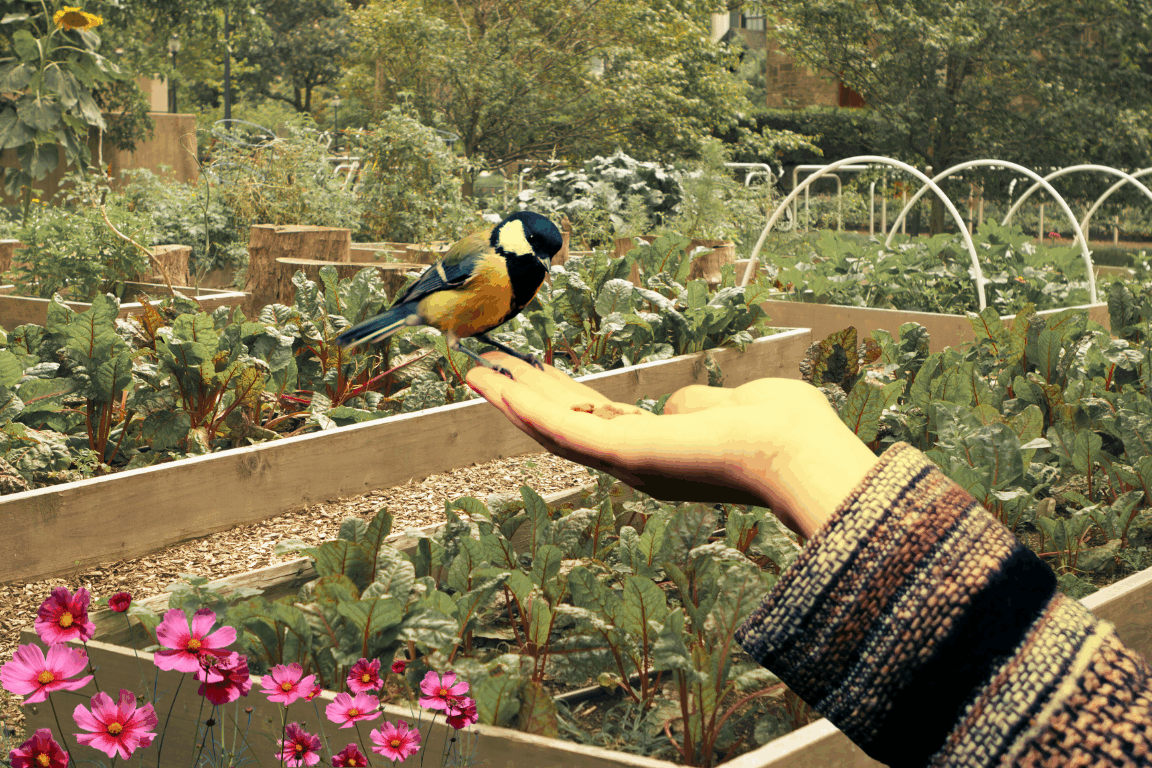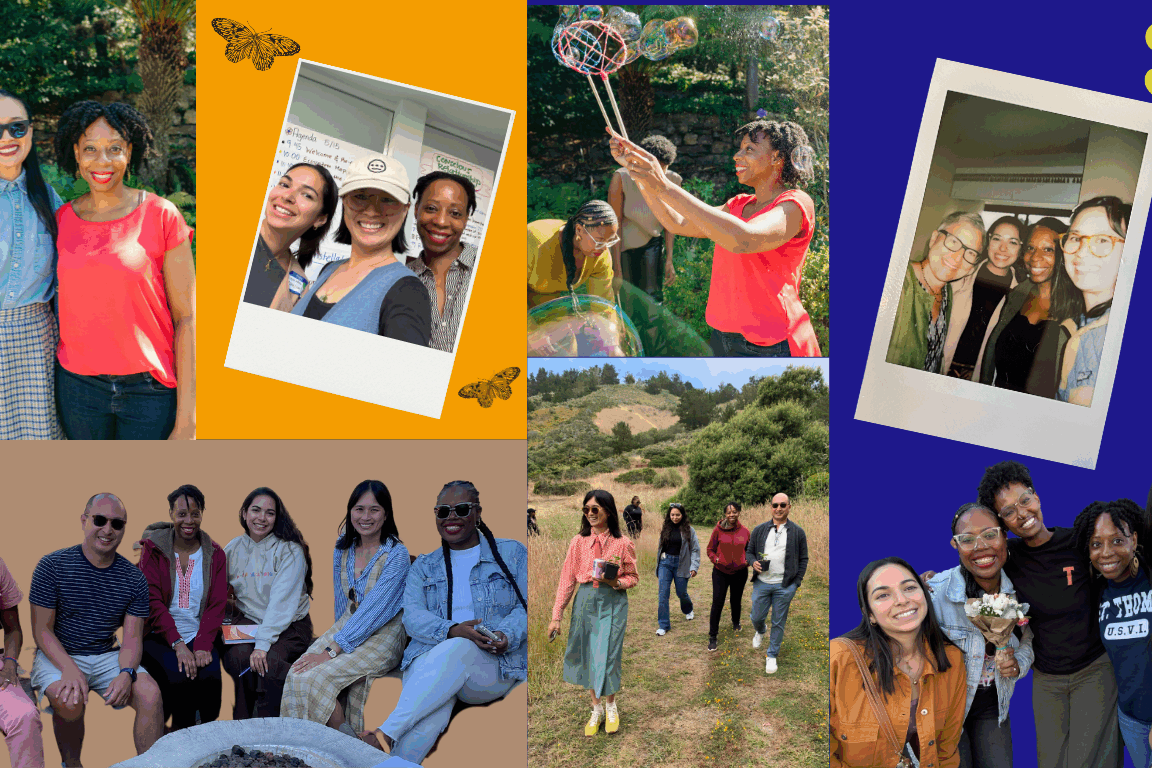While there are many ways one can describe liberation, in its simplest terms, liberation is the experience of wholeness, freedom, justice, and thriving. Liberatory leadership invites leaders to operationalize this vision of personal and collective freedom, justice, and thriving through their individual approaches and through their organizations. It necessitates an internal interrogation of how race, gender, and power interact with our work. As part of the Liberatory Leadership Partnership, we are exploring what supports and what gets in the way of living out these compelling visions and identifying promising practices that we can try on to right the balance.
In this series, Ericka Stallings, Ananda Valenzuela, and Trish Adobea Tchume – three leaders committed to embodying and promoting liberatory leadership practice in their organizations and in the broader field – share reflections on what this approach looks like in practice, especially when things get hard.
I don’t like conflict. I’ve never been good at it, and I’ve grown into someone who is decidedly not a fan. In fact, if there were an anti-conflict fan club, I would be a member in good standing. Until recently I didn’t realize that I was so averse to conflict because I wasn’t allowing myself to see the possibility of generative conflict. A Restorative Justice facilitator, Aida Cuadrado Bozzo, helped me to see generative conflict as a way of engaging that allows people to build something new as opposed to the way I previously saw conflict, which was as something that is permanently destructive, ripping things and people apart. If we are going to pursue liberatory leadership, I think we will all need to reimagine our relationship to conflict and invest effort in shifting towards generative conflict.
So, if generative conflict is a thing and there is a way to be in conflict that doesn’t injure, why don’t we just always do that? As I reflect on my experiences observing, or being a part of, organizational and interpersonal conflict in change-making entities like coalitions, organizations, boards, and other groupings over the years, I realized that there are several collective components in addition to individual or personal components that can foster destructive rather than generative conflict. Yes, the individual communication and “leadership” skills of those involved matter. But just as significant are the many ways we, as a society, have learned to navigate disagreements and engage in conflict: the contents of our collective toolbox. I’ve seen how destructive it can be when the same skills, attributes, and practices that make it possible to “win” against one’s opposition are turned inward, within our groups, organizations, and collectives.
We may not necessarily want to be hurtful, but often the ways we’ve learned to get important needs met is to use violence to “get a win.” I think many of us just don’t know how to be different. So when we experience conflict, we reach for tools and instead pull out our weapons. By “weapons” I’m referring to many of the tactics and strategies I’ve been exposed to which have been combative exercises of force and powerful defenses against oppression. But these effective organizing mechanisms are damaging when used in the wrong spaces. If we want to build a path towards liberation together, we need to do things differently, reaching for tools instead of weapons. It is really hard to turn to each other with weapons in hand and simultaneously be in deep, vulnerable relationships with one another.
When we pick up weapons against each other:
- We make collaboration hard and build institutional communities that are combative, dehumanizing, and violent. Places where we turn against rather than toward each other. Places where it can feel too risky or dangerous to disagree, innovate, or risk failure inherent in experimentation. We eliminate the space to be whole, vulnerable, imperfect people, because to be imperfect may expose us to attack, derision or expulsion.
- We muddle the conversation about accountability. I often see a conflation of accountability and punishment. Rather than treating accountability as a tool for examining, correcting, and mitigating harm and encouraging healing and restoration, instead holding someone accountable can mean dragging them. This model obscures intent; when our tools are weapons it’s hard to see if hurt was intended or if injury is simply the consequence of having hurtful tools.
- We place people with new leadership approaches, particularly BIPOC leaders, in a very tough spot. These leaders frequently find themselves faced with pressure to usher in a new future while bearing all of the responsibilities and expectations of past systems. When they are inevitably imperfect, BIPOC leaders attempting to make change find themselves attacked, hurt, disillusioned, and burnt out. Begging the question, what’s the point of moving into a position to change things if by doing so you become “the man” or a “target?”
What should we do instead? If we lean into Liberatory Leadership practice, we are invited to:
- Seek our collective North Star: Identify the values that guide our efforts and ground ourselves in a collective purpose that moves us beyond individual issues. My former colleague at LLC, Deborah Meehan, often said her dream for LLC was for it be an organization that is eco-centric rather than ego-centric, such that LLC is guided by our commitment to the work and that we move to be in alignment with our values rather than narrow organizational interest. I’m thankful to Aida for introducing me to another concept I find helpful, that of principled struggle. Offered by N’Tanya Lee, principled struggle is described as “when we are struggling for the sake of something larger than ourselves and are honest and direct with each other while holding compassion.” (see We Will Not Cancel Us)
- Reimagine our Tools: I think we need to spend some time revisiting and curating our toolboxes. We can think about how we want our tools to reflect our values and vision for a liberatory future, assess where we are aligned or misaligned, and finally adapt our tools to get us closer to liberatory values alignment.
- Discern the right time to use our weapons: I’m not suggesting that we get rid of our weapons. Right or wrong, I feel a strong attachment to these aggressive weapons as they have helped defend us from untold indignities. Sometimes we may have to fight and will need to make use of those weapons, but we also need to create non-weapon-like tools and develop the discernment to know when to use tools and when to use weapons.
- Invest time in learning about authentic generative conflict: Thinking about this topic impressed upon me the extent to which my capacity to engage in generative conflict and have “the hard” conversations is woefully inadequate. I bought the book, We Will Not Cancel Us by adrienne maree brown, but because of my aversion to conflict it took me months to be able to read it. I’m glad I finally did read it, because I found a lot of what I needed on those pages. Additionally, Aida helped me push past my discomfort with conflict to try on being more honest, more grounded in values, more loving, more grace-full to myself and others, and more open. This approach didn’t result in a magical end to conflict but it did help me to gain perspective and confidence in the way I was showing up in relation to conflict. This change would not have been possible without external support.
- Start the work before the conflict: Let’s think about how we want to engage with conflict and establish restorative justice agreements before conflicts arise, relationships are damaged, and/or trust is broken. How do we build this into the initial stages of our work?
- Value Relationships: Valuing and centering relationships offers the opportunity to minimize harm because when we are in relationship we can actually see each other rather than the conflict that lies between us. Being in deep relationship early on has a preventative effect.
- Value Rest: It’s hard to be connected, do the work of maintaining relationships, and show up as your best self when you are tapped out or when you don’t have the space to pause and reflect and see different ways to be with each other. That requires us to create collective and institutional cultures and structures that center our well-being and allow for rest; countering urgency-fueled pressure to overwork and under-resource ourselves, our staff, and our organizations.
- Resource Healing and Restoration: This is hard work, it consumes large amounts of time and emotional labor. We all have much to learn and unlearn, and need thoughtful guidance and support to develop new tools, practices, and mindsets. Our organizations need adequate and ongoing financial resources to do this work. For most organizations, this involves intensive structural or culture shifts rather than a quick fix.
- Examine our relationship to power: I don’t think it is possible to talk about conflict, and responses to conflict without talking explicitly about power. Woven through the conversation about conflict are power asymmetries and the way power relationships influence the way we engage in conflict. While differences in power exist within our movements, examining those asymmetries can be difficult. In some cases we may find it difficult to assess the power we have and may not be aware when we are weaponizing our power or replicating oppressive power relationships.
Conflict isn’t easy for me, it leaves me churned up, doubtful, and ill at ease, sometimes fear of it makes me feel immobile. I also know it isn’t easy for lots of other people to deal with conflict, so rather than focusing on this as an individual exercise, we can shift to thinking of this as a collective exercise. Despite how I feel about it, I also know embracing new and less harmful approaches to conflict is essential if we are to do the hard work of collaboratively wrestling with all that stands between us and liberation. I think this requires us to create collective spaces that make space for, value, and resource generative conflict. I also have faith that what we build as a result will be beautiful.
Be sure to read the other entries in this series: How to Tend to Your People AND Your Organization When Staff Struggle by Ananda Valenzuela, and Three Lessons (so far) for Funding Liberatory Leadership by Trish Tchume, Director of Liberatory Leadership Practice at the Robert Sterling Clark Foundation.
Related Posts
July 21, 2025
The opposite of anxiety is trust.
June 21, 2025




